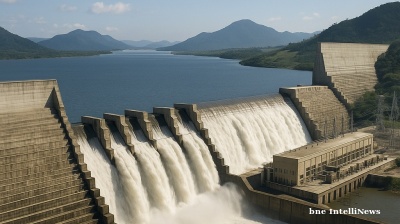African leaders, lenders at summit in Ethiopia seek to mobilise $100bn climate investment ahead of COP30

African leaders met in the Ethiopian capital on Monday (September 8) for the second Africa Climate Summit, where they put forward a new concept for climate adaptation funding that portrays the continent as ripe with opportunities for green investments rather than a disaster zone.
It is “time to replace climate aid with climate investment,” Ethiopian Prime Minister Abiy Ahmed is quoted by the Associated Press as saying during the summit’s opening ceremony, attended by heads of state, business leaders, climate scientists, activists and other stakeholders.
Africa, which has been battered by landslides, floods and droughts this year, aims to speak as one ahead of the COP30 global climate talks in Brazil, and attract more investment in carbon capture, renewable energy, critical minerals for green technology and sustainable agriculture.
The summit declaration, which will outline Africa’s priorities and proposed solutions, is due to be finalised at the three-day gathering and presented at COP30 in November.
“We are not here to negotiate our survival. We are here to design the world's next climate economy,” Ethiopian Prime Minister Abiy Ahmed told the opening ceremony, as quoted by Reuters.
Abiy called for a new Africa climate innovation initiative, funded by the continent's 54 countries and bringing together African universities, research institutions, startups, and others to deliver 1,000 solutions to tackle climate challenges by 2030.
Meanwhile, Kenya’s President William Ruto presided over the signing of a cooperation agreement backing the Africa Green Industrialization Initiative (AGII) at the summit, The Standard reported.
The Kenyan newspaper noted that framework brought together African development finance institutions and commercial banks to mobilise about $100bn for green industrial projects across the continent.
Institutions signing the framefwork included the African Development Bank (AfDB), African Export-Import Bank, Africa50, Africa Finance Corporation, KCB Group, Equity Group Holdings, Standard Bank Kenya, and Ecobank, alongside the African Continental Free Trade Area (AfCFTA) Secretariat.
At the Africa Climate Summit, leaders and bank executives unveiled financing pledges and project pipelines aimed at converting renewable energy capacity into industry.
“United with our financial institutions, energy systems, trade corridors, and partners working in solidarity, we can establish inclusive and globally competitive green value chains,” Ruto said as quoted by The Standard.
“In doing so, we assert Africa’s rightful place in the modern economy—not merely as a source of raw materials, but as a continent of innovation, industry, and growth.”
The framework marks a shift in Africa’s climate strategy, moving from dependence on external aid to Africa-led investment by aligning finance, trade and energy infrastructure. AGII originated from commitments in the Nairobi Declaration at the inaugural Africa Climate Summit in 2023 and was framed at COP28.
According to the International Renewable Energy Agency (IRENA), Africa nearly doubled its installed renewable capacity from 32.5 GW in 2014 to 62.1 GW by the end of 2023—a 91% increase over the decade. Yet this accounted for just 1.6% of global capacity, according to Ecofin Agency.
In 2024, Africa added 4.2 GW of new renewable capacity, a 6.7% rise, bringing the total to about 67 GW, according to Energy in Africa. These figures highlight both rapid progress and a persistent infrastructure gap—the context in which AGII’s $100bn target seeks to establish integrated green-energy corridors across the continent.
Africa50 and its partner PowerGrid were designated to lead a flagship Kenya Independent Power Transmission project — a public-private partnership valued at about $313mn. The project will build a 177 km, 400 kV Lessos–Loosuk line and a 64 km, 220 kV Kisumu–Kakamega–Musaga line with substations to distribute renewable power.
KCB Group CEO Paul Russo said his bank would mobilise financial and non-financial solutions, while Equity CEO James Mwangi pledged $1bn from its Africa Recovery and Resilience Plan.
bneGREEN

Kazakhstan calls for urgent international action on rapid shallowing of Caspian Sea
Could plan to connect the Caspian and Black Seas with a tunnel or canal come to the fore?

Seoul’s energy balancing act up to 2050: then green power for the win
In the northeast corner of East Asia, South Korea is quietly steering its energy future towards a delicate pro-nuclear, pro-renewables outcome. With eyes fixed firmly on 2050, policymakers in the capital Seoul are doubling down.

Tajikistan’s glaciers are disappearing
Tajikistan’s glaciers are retreating at an alarming rate, with over 1,000 already gone completely and dozens more under threat, according to a new Atlas of Environmental Change published by the United Nations Environment Programme (UNEP).

Snowfall shortages destabilising some of world’s last resilient glaciers, expedition in Tajikistan shows
Scientific team unable to yet say whether the “water towers” have reached “point of no return”.



_0_1757090003.jpg)